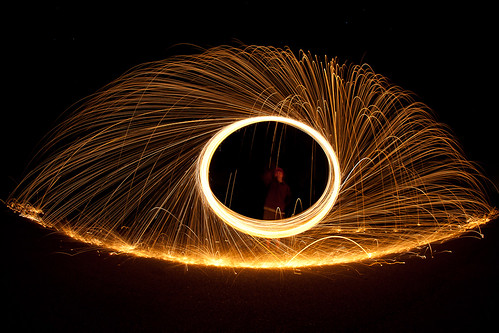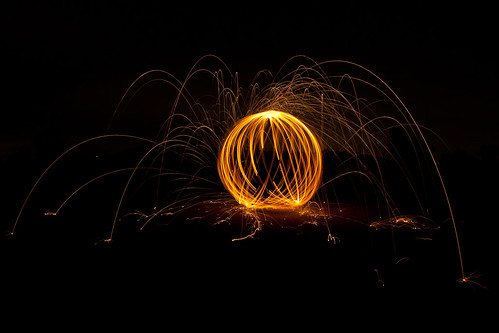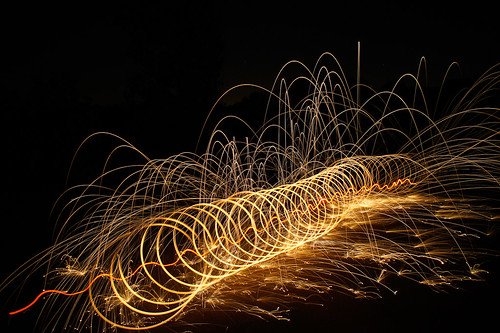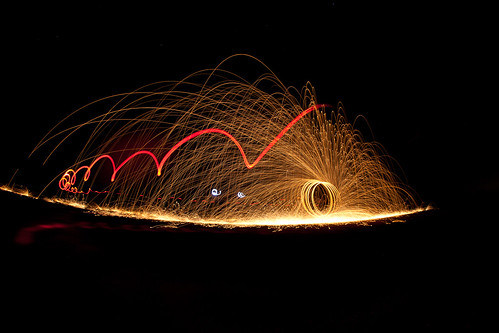CPVC Parts Needed:
QTY Description Price Total
Total: $17.91
I used a power miter saw to cut all the pieces, but you could easily do it with a hack saw. Before using any cement, I put together all of the parts to see what the depth of the softbox would be, and to get a feel for the rigidness of the frame. I started out with the box much deeper, and ended up cutting down the cross-pipes to get it to it's final depth. The Octagon measures 35" across at it's widest part, and each segment is 13.5 inches. The length of the struts between the 2 octagons is 17". If you want a deeper box, make the struts longer.
I originally purchased 3 10 foot sections of CPVC pipe, as I knew my measurements would be close, and want to ensure I didn't have to go back to Home Depot again. For the smaller of the 2 octagons, I cut small fittings about 1" in length to slide between the 45-degree angle fittings and slip tee fitings. The opening is a bit bigger than I wanted, but all the the fittings were snug together, and it's as small as possible.
Once I was satisfied with the frame, I started to prime and glue all the pieces together one by one. If you do it this way with the frame already put together, and you pull pieces off as needed, the angles will stay where you need them. As with any project using this type of cement, make sure your work area is well ventilated.
For the interior of the softbox, I used a Mylar emergency blanket. I ordered a 10 pack off Amazon prime for just under $10, and I only ended up using 1.
I wasn't all that concerned about getting the wrinkles out of the mylar, and used duct tape to secure it to the frame. I used a combination of black and silver tape, although you won't see the tape when the project is completed.
Here is the frame with the tape cut and taped.
Here is where the cost gets sketchy, as my wife was going to the craft store to pick up some fabric for a quilt, and I asked her to get me translucent white fabric and some black fabric. I gave her the dimensions, and also said to pick up some elastic that I'd use on the white overlay. She picked up 40" x 40" of some white curtain fabric and 2 square yards of black fabric. I told her to get the cheapest she could find, and with sales and coupons, she said everything was less than $15.
White and Black fabric, with elastic - ~$15
In this image you can see how duct tape holds the Mylar to the frame and struts. You can also see the white sheet cut to size and the elastic I'll sew into it.
I once sewed a few bean bags for a game called baggo, corn hole, or bags, depending on your geographical vernacular. Basically I didnt' have that much experience behind a sewing machine, but knew that I didn't need precision on this project. After a quick review of how to sew, I created a hem in the white sheet about 1.5 inches. It helps to iron a crease into the fabric before sewing, a trick that I wouldn't have guess without some tips from Katie.
I left a gap at the end so I could fish the elastic through, and tied the ends off of the elastic. Eventually, I'll sew those together, but for now, it was enough to tie the 2 ends of the elastic together in a knot.
Here is the 1st fitting of the sheet. If I were to do it again, I would have made it slightly bigger, maybe 42" with a 1" pocket for the elastic.
Next, I cut the pieces for the black fabric for the back of the softbox.
Inside out, I sewed them together to make a "skirt"
Here is a dry fitting of the "skirt" on the frame.
I used a Speedy Stitcher sewing awl that I purchased a while back to create a DIY GoPro HD Hero Chest mount, and this worked great for this project too. If you need to purchase a Speedy Stitcher, they are $13.08 on Amazon. I started with the smaller octagon, as it was easier with the black fabric laid over the frame. In hindsight, I would have done the bigger one first, as I ended up getting the fabric off-kilter, and it wasn't fitting properly by the end. When using the sewing awl, you not only have to push through the fabric while holding it tight, but you also go through the duct tape and Mylar underneath. The awl gets sticky from the duct tape adhesive, and my fingers are still sore 2 days later from working with the awl and thread.
You have to skip past the "T" sections, and only sew around the 45 degree fittings, but this is plenty to keep the fabric attached to the frame.
I used fabric scissors to cut the excess black fabric off, leaving about 1/2" -3/4" fringe.
As you can see, I bunched up too much fabric on this side, leaving not enough excess on the far side when I got that far. I think that doing the larger opening first, and sewing the smaller afterwards would have been smarter.
With all the fabric attached to the frame, I needed a way to mount the softbox to a lightstand. I chose to use 2.5" x 1/4" thread bolts, and used extra nuts to give the mount a little extra to ensure that the softbox could stand perpendicular to the ground. I originally used 1.5" screws, and the CPVC frame got in the way, and didn't allow for a flush mount. I used about $2.00 in miscellaneous bolts, nuts, and washers. This would be higher if you went with Stainless steel. I drilled right through the fabric and CPVC pipe and mounted the bolts.
Using 1.5 inch Aluminum, I eyeballed and used a sharpie to mark where I wanted the bend to be. I have vice on my work bench to make it easier, and Aluminum is easy to work with. I also already had this in stock at home, used for other projects.
I ended up with a bracket as shown below, with a 1/4" thread screw on the bottom mated with a light stand coupler. I'm thinking about changing the mounting bolt to be a 3/8" bolt so that it could mount directly to the light stand coupler, but being able to use a Swivel Umbrella Adapter adapter gives greater flexibility in positioning the softbox.
Here you see the bracket attached to the softbox using an alternative, a 1/4" coupler nut, which would then allow you to mount to tripod with 1/4" bolt. Having the option of lightstand mount, 3/8" female or 1/4" female mounts is nice.
Testing the strength of the bracket it holds nicely.
Now I'll need a method for attaching the flash, so I used some additional aluminum to create a short section attached to the middle of the bracket, and drilled a hole for the flash mount.
I used a Brooxes Better Camera Keeper, which is normally part of my Kite Aerial Photography rigs, to attach the speedlight to the bracket. That is the little red knob in the picture below that has a short 1/4" bolt. You could have used a standard bolt, but this was handy, as I already had a few of these.
Without the diffuser
Test shot with the speedlight on
I cut some extra fabric to fill the opening in the back as a curtain so light wouldn't stray out, and used mini clamps to attach it.
I replaced the outside nuts on the bracket with knobs that I could use to make adjustments. These knobs are not necessary, but functional, and cost about $4.50.
Finally, I cut a hole in the fabric so I could put the flash through the opening, and used a rubber band to secure it to the flash. No light escapes out the back, and the rubber band challenge is completed! I was hoping to sew a nice border around this fabric and create a hem, but I have no idea how to re-thread the sewing machine, so for now it will stick to this, until my wife can help me. It's amazing that I'm a technical guy, and the sewing machine is like an impossible puzzle when something goes awry!
Now, does it work???
Since my dogs were the only willing participants in my project, with some help from some dog treats, I tested my new softbox. All shots are off the camera, a Canon 5D Mark II, without any post processing.
One of my dogs, Dora, sitting on the ottoman. 1st image, no flash.
Octo softbox placed camera left.
Here is Maximus, who is a great model, and will sit very patiently while waiting for a treat. He's sitting next to the front door, where ambient light from outside is lighting the right side of his face. No flash.
Softbox on camera right to light up the left side of Max's face.
The big 35" softbox will be nice for portraits, but it's not very portable. It will fit inside the back of my car, so if I know that I'll use it, I can bring it along to shoots. The softbox is much more durable than I expected, and the CPVC pipe worked out great as a frame. Sometimes, I wonder if any of the DIY projects will make me look less professional, however, this is one I would use without feeling embarrassed. The results of this project are fantastic, and can't wait to test it out in the real world. Since I already had many of the components for this project, I spent a little over $33 for new supplies. If you needed to acquire everything, excluding tools, I feel that you could do it for less than $50. For full size images listed in this DIY example, click here.






















































